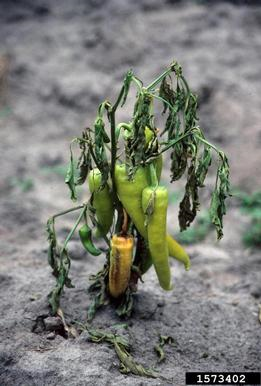
Exercise 5
Exercise # 5
ROOT, FOOT AND COLLAR ROTS
Root, foot and collar rots are caused by those fungi which dwell in the soil. Some of these fungi have wide range of their hosts while others have narrow. Root rot fungi attack the root part of the plant while foot rot fungi invade the lower portion of stem. In case of collar rot, fungi attack the collar portion. As these fungi are soil borne, therefore, cultural and soil sterilization procedures can be effective. However, soil sterilization is not cost-effective for those crops grown on seed-beds or cultivated in green houses. The best way to control them is the use of resistant cultivars.
Materials
Diseased samples of root rot of cucurbits (Macrophomina phaseolina), root rot of cotton (Rhizoctonia solani or Sclerotium bataticola), root rot of chillies (Rhizoctonia solani), foot rot of rice (also known as Bakanae disease) (Fusarium moniliforme) and Collar rot of chillies (Phytophthora capsici)
Procedure
- Observe the symptoms of these diseases in detail. Record the symptoms of foot rot of rice (Bakanae disease) in nursery and in the field after transplantation.
- Prepare the cultures of above mentioned root, foot and collar rots fungi and study their cultures i.e. colony colour, mycelial and spore structures etc. under high power microscope.
Questions
- Name the fungus from above mentioned fungi having wide range of hosts?
Macrophmina phaseolina has wide host range.
- Write down the symptoms of foot rot of rice in nursery and in field at maturity stage?
In nursery seedling appears in whitish pale and weaker. Infected plants appear taller in field. Pinkish fungal growth appears in the splitted nodes.
- What are the characteristic symptoms of collar rot of chillies?
At first, the stem of the plant near the ground becomes rotten.
- What is difference between soil solarization and soil sterilization?
Sterilization refers to any process that eliminates, removes, kills, or deactivates all forms of life
The process involves covering the ground with a tarp, usually a transparent polyethylene cover, to trap solar energy
- How does temperature influence collar rot of chillies?
infect susceptible host at high temperature (25-35°C). At high temperature, plant physiology is badly affected while that temperature is favorable for pathogen growth.
Foot Rot of Rice


